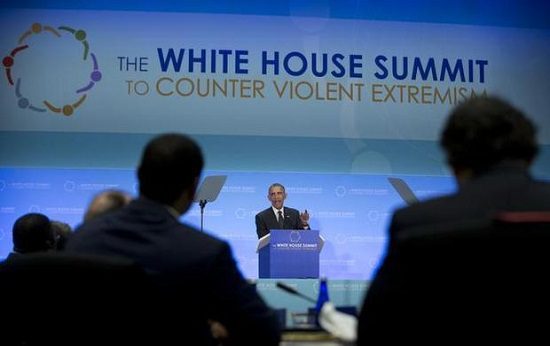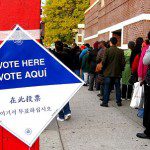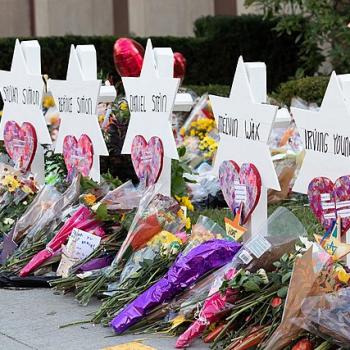
By Alejandro J. Beutel with Mimi Yu and Asma Shah
The Institute for Social Policy and Understanding (ISPU) hosted a debate at the Islamic Society of North America (ISNA) conference over Labor Day weekend in September regarding the concept and practice of Countering Violent Extremism (CVE) inside the United States, but one very basic question went unanswered: What is CVE, and how does it work?
(Full disclosure: I am a researcher affiliated with ISPU and was initially invited to participate in the CVE debate as a panelist, but declined the offer.)
CVE remains controversial and misunderstood, particularly to many American Muslims. In order for there to be a constructive discussion and debate about CVE, we must first unpack its meanings. Unfortunately, in this regard the conversation at the ISPU debate fell short. Asked in the last ten minutes of the event, none of the panelists — both for and against CVE — responded to a question from the audience, “Please explain the general framework of how CVE works … What is it? How does it actually work?” (To be fair, the panelists were asked to answer the question in two sentences or less.)
Regardless of how one feels about CVE, it’s clearly a timely topic (and one still often misunderstood). In mid-August, a few days before the ISPU debate, there was a pair of under-reported domestic violent extremism-related arrests in Indianapolis and Las Vegas. Last month there were two ISIS-related violent extremism incidents, in New York and New Jersey and in Minneapolis.
During all three presidential debates Hillary Clinton and Donald Trump proposed ways, perhaps unartfully at times, of preventing violent extremism in the United States. And, last week the White House released its latest Strategic Implementation Plan to combat violent extremism in the United States. In other words, current events are making CVE a topic of interest and concern to our nation.
As a researcher who focuses on CVE and who happens to be an American Muslim active in his local communities, here’s one answer as to what CVE is that I hope will thoughtfully contribute to the conversation on this issue. (I hope in a follow-up article to tackle some of the hard questions and criticisms directed at CVE.)
CVE as a Concept
So, what exactly is CVE? The words “Countering Violent Extremism” have been used to describe everything from federal government policies and programs to civil society-led violence prevention practices. However first and foremost, CVE is a concept and approach to mitigating and preventing acts of ideologically-motivated violence by non-government actors.
To be clear, there’s no single definition, academic or otherwise, of CVE. However there’s also no single definition of “security,” and that has not deterred academics from researching it and practitioners from pursuing it despite its multiple meanings.
What the multiple definitions of CVE have in common is that they define it is as a framework to guide an evolving set of policies and practices seeking to prevent ideologically motivated violence by non-government actors (“violent extremism”) using a wide range of measures outside of law enforcement actions like arrests and surveillance.* Government agencies are not the only ones engaged in violence prevention and mitigation; civil society/community actors or government agencies can be involved in efforts. CVE can be government-led and sourced, it can civil society-led and sourced or it can some mix of the two. (In fact in response to unpopular and counter-productive government-led efforts in the UK, local communities are now planning to launch their own “grassroots” alternative.)
In other words, CVE is an approach to prevent ideologically-motivated violence utilizing policies and practices that go beyond surveilling, arresting and prosecuting potential suspects of violent extremism. In fact, this is what makes CVE as a concept and set of practices distinct from counter-terrorism, which limits itself to surveillance, arrest and prosecution by law enforcement agencies.
In practical terms, CVE as a concept involves five lines of effort:
- Engagement. The purpose of engagement is to build relationships of between local communities, civil society organizations and government agencies. Engagement activities include quarterly “town hall” meetings and “roundtable discussions” between community members and local government agencies.
- Prevention. This line of effort involves community-wide implementation of programs, policies and activities to mitigate the risk of any individual’s movement into violence by creating healthy environments that reduce the appeal of extremism. Examples range from instruction on civics and religious education to creating “safe space” forums where people have healthy outlets on sensitive topics without the fear of stigma or shame.
- Intervention. Similar to “crisis counseling,” this is about dissuading at-risk individuals seeking to engage in violence, but who have not yet taken any significant steps to fulfill that intent. In other words, this line of effort is a non-arrest option that seeks to enter at-risk individuals into counseling rather than into handcuffs, when possible.
- Interdiction. Unfortunately, prevention efforts or attempts to intervene with specific individuals may have failed or may be too late. In those cases where individuals are taking significant steps toward violent action, are already engaged in violence or facilitating other illicit actions in support of violence, government policing actions may be necessary. In a U.S. domestic context, measures include arrest and prosecution of individuals seeking to engage in violent criminal activity. However under a CVE framework, these government policing actions are intended to be a measure of last resort, rather than the immediate go-to solution.
- Rehabilitation/Reintegration. These activities are intended for those who are: 1) “walking back” from the edge of unlawful violence or activities in support of unlawful violence because of intervention activities; 2) currently serving time in prison or on parole after an interdiction; or 3) happen to be returning from a combat zone/exiting from a violent extremist organization. These individuals often find it difficult to return to normalcy due to challenges that range from mental trauma to social stigma and community ostracizing. As the name of these activities suggests, they are intended to help specific individuals get back on their feet as law-abiding, productive members of society.
Disagreement and open discussion are healthy for any community. However, if we are going have deeper conversations about topics that the potential to impact our communities and our nation, such as CVE, we must make the most informed decisions we can. Our communities deserve to have as much relevant information as possible before coming to any consensus — if one is even possible. May the conversations on this topic, and others, continue civilly and substantively.
Alejandro J. Beutel is a researcher for Countering Violent Extremism at the University of Maryland’s National Consortium for the Study of Terrorism and Responses to Terrorism (START). He is also a fellow at the Institute for Social Policy and Understanding. Views expressed here are solely those of the author and not necessarily the views of START and ISPU.
Mimi Yu and Asma Shah are research interns at START.
*The author of the piece sent over a note on 11/7/16 to clarify some unclear language when the article was first published. It has since been updated with his clarification. The original language stated “…using a wide range of non-law enforcement arrest and surveillance measures.” The author regrets any confusion.












